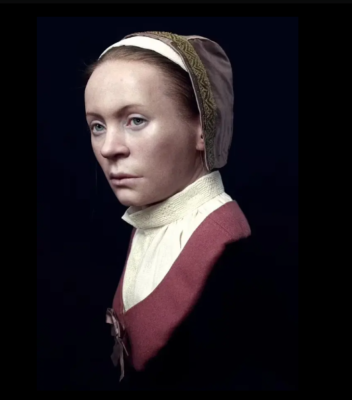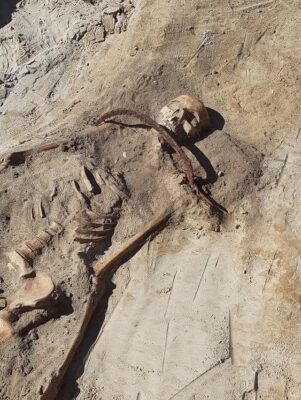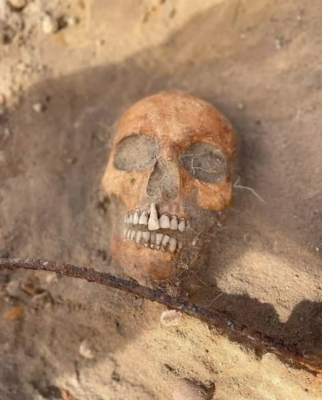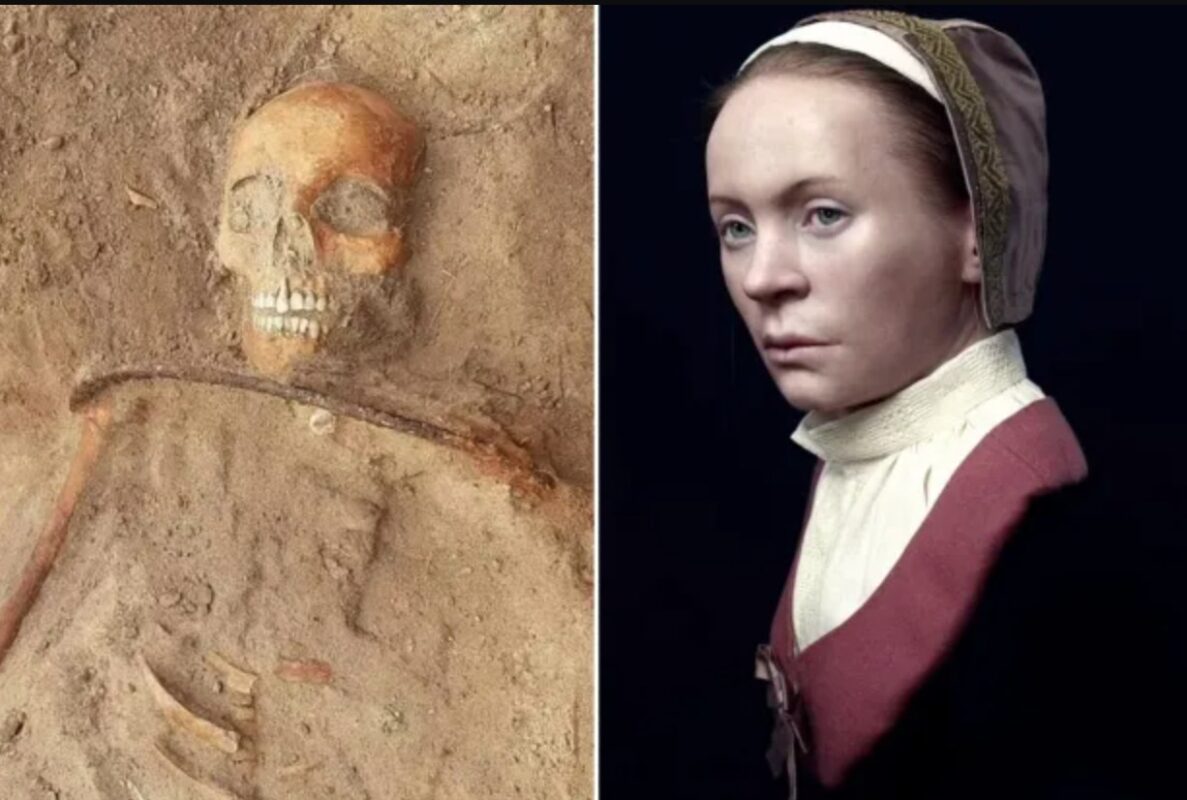The face of Zosia, a young woman buried 400 years ago under grim circumstances, has been meticulously reconstructed, offering a window into the fears and superstitions of 17th-century Europe. Buried with iron restraints on her neck and feet, Zosia was long believed to be a “vampire,” a label rooted in ignorance and misunderstanding. Follow archeology.dulichvn.net to discover many hidden mysteries that have yet to be discovered.

The Discovery of Zosia
A Grave of Superstition
Zosia’s remains were uncovered in a 17th-century cemetery in Pien, northern Poland. Her burial was marked by iron restraints: a padlock on her foot and a sickle placed across her neck—ritual measures believed to prevent her from “rising from the dead.”
Why Was She Labeled a “Vampire”?
Experts suggest Zosia might have suffered from misunderstood medical conditions, such as fainting spells or mental health disorders, leading to her ostracization. At the time, such conditions were often linked to supernatural fears.
A War-Torn Context
The 17th century in Europe was rife with war and turmoil, creating fertile ground for myths about vampires and other supernatural beings. These fears were often projected onto individuals like Zosia, who deviated from societal norms.

Reconstructing Zosia’s Face
Oscar Nilsson’s Meticulous Process
Swedish archaeologist Oscar Nilsson led the reconstruction effort. Using a 3D-printed replica of Zosia’s skull, he built her face layer by layer, relying on forensic techniques to create a lifelike representation.
Bringing Zosia Back to Life
Nilsson remarked, “Those who buried her did everything they could to prevent her from coming back to life, and we did everything we could to bring her back to life.” The result is a striking image of a young woman, no longer defined by fear and superstition.
A Glimpse Into Her Humanity
The reconstruction emphasizes Zosia’s individuality, transforming her from a symbol of fear to a poignant reminder of the consequences of ignorance and stigma.

Zosia’s Story in a New Light
A Tale of Misunderstanding
Zosia’s burial reflects a time when lack of medical knowledge and widespread superstitions led to tragic outcomes for those deemed “different.”
The Dangers of Fear-Driven Beliefs
Her story serves as a cautionary tale about the perils of baseless fears and the human cost of societal scapegoating.
Restoring Dignity
By reconstructing her face, the project seeks to honor Zosia’s humanity, challenging the narrative that once condemned her as a monster.
See more: The Bicycle in 1946: A Visionary Concept Ahead of Its Time
Conclusion
Zosia’s reconstructed face is more than a scientific achievement; it’s a window into the past, revealing the humanity behind the myths of the “vampire.” Her story is a stark reminder of the dangers of superstition and fear, and through modern archaeology, her dignity has been restored. As her face emerges from history, Zosia now stands as a testament to resilience and the power of understanding.


CÁC TIN KHÁC
Mark Twain & Olivia Langdon: A 36-Year Love Story Filled with Laughter and Devotion
The Tollund Man: A 2,400-Year-Old Mystery Preserved in a Danish Bog
Skara Brae: Scotland’s Hidden Neolithic Village
Porta Nigra: The Hidden Depths of Trier’s Iconic Roman Gate